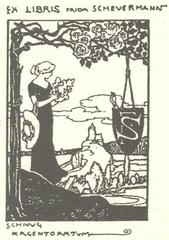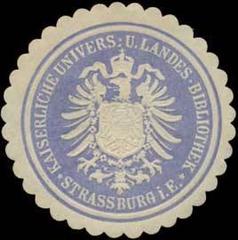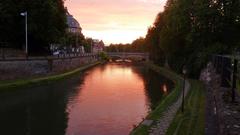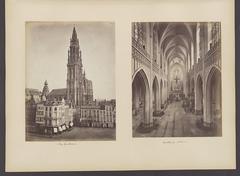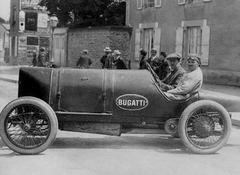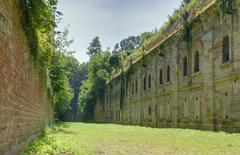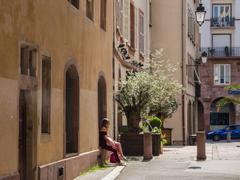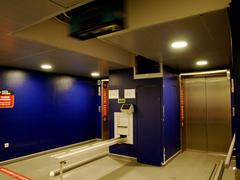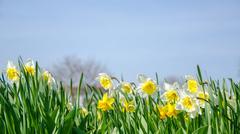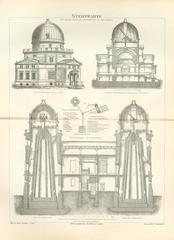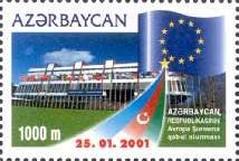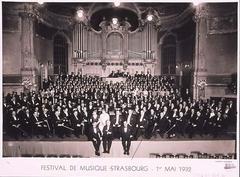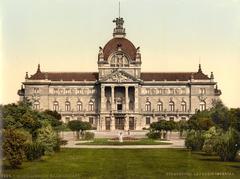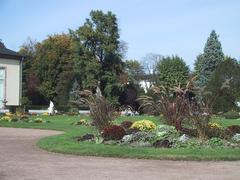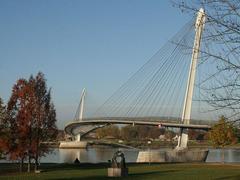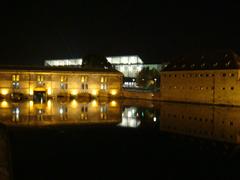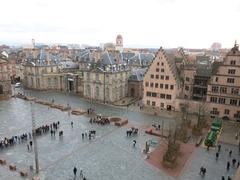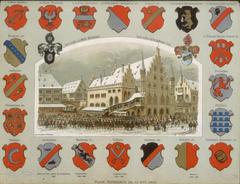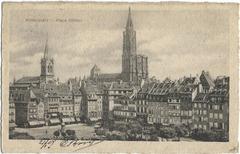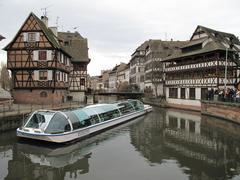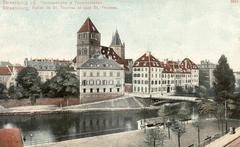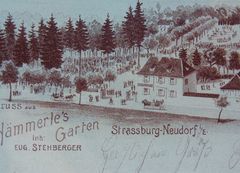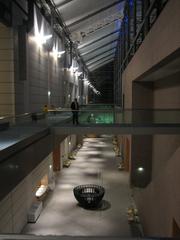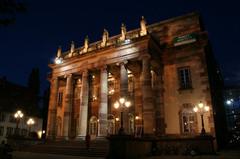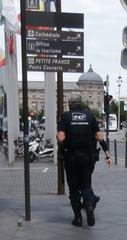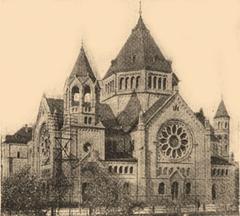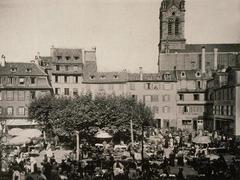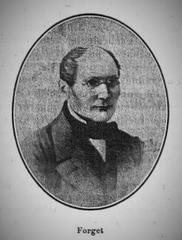
Liberation of Strasbourg: Visiting Hours, Tickets, and Historical Significance
Date: 03/07/2025
Introduction
Strasbourg, perched at the border of France and Germany, is a city steeped in history and renowned for its role as both a battleground and a bridge between nations. Central to its legacy is the Liberation of Strasbourg in November 1944, when General Philippe Leclerc’s 2nd Armoured Division fulfilled the famed Oath of Kufra by raising the French flag atop Strasbourg Cathedral, signaling the end of Nazi occupation and the restoration of freedom in Alsace. Today, Strasbourg’s commemorative sites, museums, and memorials invite visitors to witness the city’s enduring spirit and the pivotal events that shaped modern Europe (Strasbourg Tourism Office, Chemins de Mémoire).
This guide provides comprehensive information for visitors: from practical details such as opening hours, ticketing, and accessibility, to the historical context of each site and tips for making the most of your visit. Whether you are a history lover or a curious traveler, Strasbourg’s liberation sites offer a profound journey through resilience, sacrifice, and reconciliation (Enjoy Strasbourg).
Historical Background: The Liberation of Strasbourg
The liberation of Strasbourg on 23 November 1944 was a defining moment in World War II. After years of Nazi occupation and harsh repression, General Leclerc’s forces entered the city, greeted by jubilant crowds as the Tricolore was raised over the cathedral. This act fulfilled the Oath of Kufra, a solemn vow made in 1941 to restore French sovereignty over Strasbourg. The city’s liberation was hard-fought, withstanding fierce counterattacks during the Ardennes Offensive, and marked the end of Nazi rule in Alsace (World City History, Historia Mag).
Strasbourg’s subsequent transformation into a symbol of Franco-German reconciliation and European unity—hosting institutions such as the European Parliament—highlights the enduring significance of its wartime experience (My Weekend in Alsace).
Key Liberation Sites and Visitor Information
1. Liberation Monument at Parc de l’Orangerie
Significance: The Liberation Monument commemorates Strasbourg’s return to France and honors those who fought for its freedom.
Location: Parc de l’Orangerie
Opening Hours: Park open daily 8:00 AM–8:00 PM; monument accessible at all times
Admission: Free
Guided Tours: Saturdays at 10:00 AM and 2:00 PM (advance booking recommended via the Strasbourg Tourism Office)
Accessibility: Wheelchair accessible; paved paths and ramps; assistance dogs welcome
2. Strasbourg Cathedral (Cathédrale Notre-Dame de Strasbourg)
Significance: Site of the iconic French flag raising during liberation; focal point for annual commemorations
Location: Grande Île (UNESCO World Heritage Site)
Opening Hours: Daily 8:30 AM–11:00 AM & 2:00 PM–7:00 PM (check for seasonal variations)
Admission: Cathedral free; tower platform €8 (Voyage Tips)
Accessibility: Partial (consult official site for details)
3. Place Broglie
Significance: Central venue for liberation ceremonies, military parades, and public celebrations
Opening Hours: Public square, accessible year-round, no entry fee
Special Events: Liberation ceremonies on 23 November (advance registration required for security; starts around 9:00 AM) (Ministère des Armées)
4. Historical Museum of Strasbourg (Musée Historique de Strasbourg)
Significance: Detailed exhibits on wartime Strasbourg and the city’s liberation
Location: Grande Île
Opening Hours: Tuesday–Sunday, 10:00 AM–6:00 PM; closed Mondays
Admission: €6 adults (discounts available); free on 23–24 November for anniversary events (Dabbling in Jetlag)
Accessibility: Fully accessible
5. MM Park France (La Wantzenau)
Significance: One of Europe’s largest private WWII museums, with vehicles, artifacts, and immersive exhibits
Location: North of Strasbourg
Opening Hours: Tuesday–Sunday, 9:30 AM–5:00 PM; closed Mondays (Enjoy Strasbourg)
Admission: €7 adults; combination tickets available
Accessibility: Adapted facilities
6. The “Cherbourg” Sherman Tank Memorial
Significance: Honors the sacrifices during liberation, especially Maréchal des logis Albert Zimmer
Location: Near Port du Rhin tram stop
Admission: Free; open-air site
7. Struthof – European Centre for Deported Resistance Members
Significance: Sole former Nazi concentration camp on French soil, now a memorial and educational center
Location: About 1 hour from Strasbourg
Opening Hours: Daily except major holidays (see Struthof official site)
Admission: Ticket required
Accessibility: Some areas may be challenging for those with reduced mobility
8. Fort Schoenenbourg (Maginot Line)
Significance: Largest preserved Maginot Line fortification, illustrating the region’s defensive history
Location: North of Strasbourg
Opening Hours: Seasonal (see official site)
Admission: Ticket required
Accessibility: Underground, cool temperature; some mobility limitations
Strasbourg Museum and City Pass
To streamline your visit and save on entry fees, consider the Strasbourg Museum Pass or Strasbourg City Pass. Both offer access to major museums, discounts on guided tours and excursions, and are valid for multiple days.
Franco-German Reconciliation and European Unity
Strasbourg’s liberation is inseparable from the broader narrative of postwar reconciliation and European integration. Today, the city’s European Quarter—home to the European Parliament and Council of Europe—serves as a living symbol of peace, democracy, and collaboration (My Weekend in Alsace). Guided tours of these institutions provide context on Strasbourg’s transformation from battleground to bridge between nations.
Cultural and Commemorative Events
- Liberation Ceremonies: Annual events at Place Broglie every 23 November, with flag-raisings, parades, and artistic performances.
- Liberation Ball: 1940s-themed dance at Salle de la Bourse (free with registration) (Enjoy Strasbourg).
- Exhibitions & Reenactments: Special displays at the Historical Museum, MM Park, and Strasbourg Archives (e.g., “Guy Hoareau: The Journey of an Overseas Soldier”).
- Public Lectures and Film Screenings: Educational programs commemorating the liberation.
Advance registration is often required for major events; see official programs for details.
Practical Visitor Tips
- Transportation: Strasbourg’s city center is best explored on foot, by tram, or by bicycle. Sites outside the city (MM Park, Struthof, Fort Schoenenbourg) are accessible by car or organized tours.
- Accessibility: Most central sites are fully accessible; confirm details for outlying or underground locations.
- Language: French is official; English and German are widely spoken at tourist sites.
- Dress Code: Casual; respectful attire is recommended at memorials and during ceremonies.
- Photography: Allowed at most sites; restrictions may apply during events or in certain areas.
Recommended Itinerary
Day 1:
- Morning: Liberation Monument at Parc de l’Orangerie
- Midday: Strasbourg Cathedral and Place Broglie
- Afternoon: Historical Museum of Strasbourg and Petite France district
Day 2:
- Morning: MM Park France (La Wantzenau)
- Afternoon: Struthof or Fort Schoenenbourg (choose based on interest and transport)
- Evening: Explore local cuisine and wine bars
Sustainable Tourism
Strasbourg is committed to eco-friendly travel, with extensive bike lanes, pedestrian areas, and public transport options. Renting a bike or using trams is encouraged to minimize your environmental impact.
Frequently Asked Questions (FAQ)
Q: What are the visiting hours for Strasbourg’s main liberation sites?
A: Most museums open 10:00 AM–6:00 PM (closed Mondays). Liberation Monument and Place Broglie are accessible year-round. Check official sites for seasonal variations.
Q: Is there an entrance fee for the Liberation Monument or memorials?
A: The Liberation Monument and most outdoor memorials are free; museums and guided tours may require a ticket or pass.
Q: Are guided tours available in English or German?
A: Yes—book through the Strasbourg Tourism Office or online platforms.
Q: How do I get to the sites from the train station?
A: Most sites are within a 20-minute walk or short tram ride from Gare de Strasbourg.
Visuals and Digital Resources
- Include photos of each site with descriptive alt text (e.g., “Liberation of Strasbourg memorial at Parc de l’Orangerie”).
- Use interactive maps and virtual tours available on official tourism websites.
- Download the Audiala app for audio guides and real-time updates.
Additional Resources
For up-to-date visiting hours, ticketing, event programs, and accessibility details, consult these official sources:
Conclusion
Strasbourg’s liberation story is one of courage, loss, and hope—a narrative that continues to inspire visitors from around the world. By exploring its memorials, museums, and commemorative events, you engage with a living history that transcends borders and generations. Use this guide to plan your journey, make the most of your visit with museum passes and guided tours, and immerse yourself in a city where the past shapes a brighter, united future.
For more on Strasbourg’s history, events, and travel tips, explore our related articles and follow us on social media. Enhance your visit with the Audiala app for audio tours and interactive maps.
Sources and Further Reading
- Liberation Monument Strasbourg: Visiting Hours, Tickets & Historical Insights (2025) (https://www.visitstrasbourg.fr)
- Visiting Strasbourg: Liberation History, Key Sites, and Travel Tips (2025) (https://www.worldcityhistory.com/2025/04/the-rich-history-of-strasbourg-france.html)
- Visiting Strasbourg: Liberation History, Key Sites, and Travel Tips (2025) (https://www.cheminsdememoire.gouv.fr/en/revue/liberation-and-defence-strasbourg)
- Visiting Strasbourg: Liberation History, Key Sites, and Travel Tips (2025) (https://www.dabblinginjetlag.com/museums-in-strasbourg-france/)
- Visiting Strasbourg: Liberation History, Key Sites, and Travel Tips (2025) (https://historiamag.com/the-liberation-of-strasbourg-1944-by-paul-stjohn-mackintosh/)
- Visiting the Liberation of Strasbourg: Key Historical Sites, Museums, and Visitor Information (2025) (https://www.enjoystrasbourg.com/strasbourg-liberation-80-years/)
- Liberation of Strasbourg: Visiting Hours, Tickets, and Essential Travel Tips (2025) (https://www.visitstrasbourg.fr/en/)
- Visiting the Liberation of Strasbourg: Key Historical Sites, Museums, and Visitor Information (2025) (https://www.defense.gouv.fr/mission-liberation/ceremonies-liberation-france/ceremonie-liberation-strasbourg-programme-inscriptions)
- Visiting the Liberation of Strasbourg: Key Historical Sites, Museums, and Visitor Information (2025) (https://www.voyagetips.com/en/things-to-do-in-strasbourg/)
- Visiting the Liberation of Strasbourg: Key Historical Sites, Museums, and Visitor Information (2025) (https://www.struthof.fr/)
- Visiting the Liberation of Strasbourg: Key Historical Sites, Museums, and Visitor Information (2025) (https://www.lignemaginot.com/)







